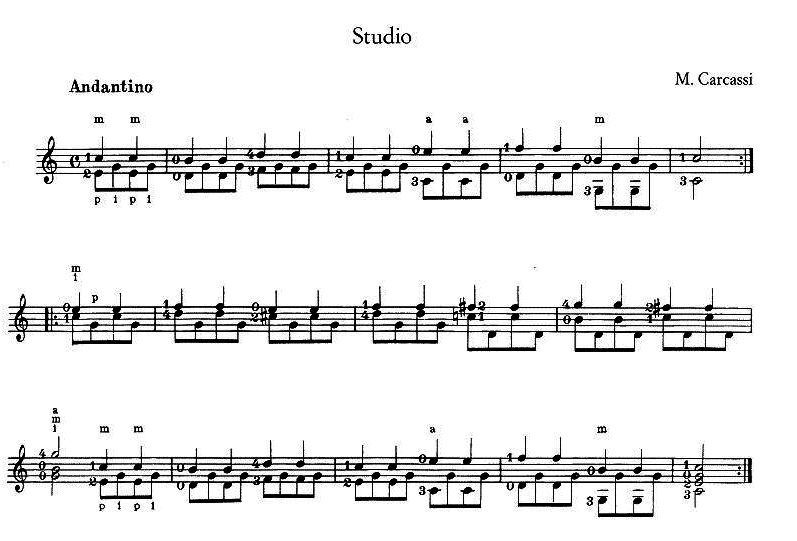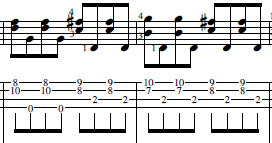Transcribing classical guitar pieces on ukulele
Often some musicians approach the ukulele after studying for years a more ‘conventional’ instrument.
So It’s natural try to play songs you already know, a sort of ‘comfort music’ that helps to get familiar with the new instrument.
I approached the ukulele after years of formal and disciplined study of the classical guitar, a challenge with something new and unconventional.
I casually met the little Hawaiian instrument and was immediately love at the first sight. And it was instinctive the try to adapt the method acquired in the years of music school to this new tool.
First of all, let’s define some important concepts to remember when making an arrangement of a piece for guitar on ukuele:
- Less extension (3/4 octaves for a guitar, a little less than 2 octaves for a soprano ukulele with 12 frets).
- Re-entrant tuning.
- The compositions in C best suit on the most used tuning (GCEA): not excluded the possibility of transposition in a different key from the original, if this allows better fingering and a more fluid and enjoyable execution.
- Rapid attack than the guitar but fast damping (little sustain).
In most cases a composer will write a song thinking about the specific characteristics of the instrument, including tuning and the possibility of using open strings: a trivial step on the guitar could becoming a nightmare on our little soprano. Often it is therefore necessary some octave jump in some voices for a more naturally execution.
Let us now consider the transcript of a simple study of Matteo Carcassi that all novice students of classical guitar have studied.
It’s a simple Andantino in C major, so well suited for ukulele arrangement that allowing a total fidelity to the original score:

The guitar fingering is made by Ruggero Chiesa (the music sheet is taken from his famous method “Guitar Gradus”)
When i make fingering on ukulele, i always keep in mind these simple points:
- Give priority to the fluidity of execution. Try to develop the musical phrase horizontally on the fretboard, trying to ‘split’ on all useful strings to avoid position jumps that can make the phrasing less fluid .
- Use as much as possible open strings. Obviously if it not violates the first rule, using also ‘campanella style’. In classical guitar, the fingerings that using many open strings is not always well seen: a note has a finite life, and a string played ‘opened’ need to be silenced, adding further difficulties execution. On ukulele the problem is much less present, since this instrument has a very low sustain.
- Don’t be afraid to ‘dare’ with very extensive fingerings. The diapason of a soprano ukulele is about 33 cm: it follows that the 12 available frets are concentrated in a very small space. Even not having a great flexibility of the left hand, you can cover several frets in an easy manner.
In this case, i have changed the fingering of the right hand: while in the guitar the ‘G ostinato’ that supports the melody is played by the index finger (with obvious implications of dynamics) on ukulele we can use the beloved (or hated?) reentrant G, playing the voice with the thumb.
During the execution it will be necessary to pay attention to the dynamics of the thumb: it’s the stronger finger of the hand, and could give precedence to the voice that support the main melody.
This is my interpretation:

After defining the dynamics the execution is very simple except the beats 8 and 9, where the comfortable continuous G that has been with us throughout the entire piece momentarily leaves the place for a D played on the second string, with an extension from the first to the fourth finger of 8 frets:

Believe me, you can do it! I don’t have enormous hands and I can play it without difficulty…a bit of finger-stretching it never hurts!
[embed]https://youtu.be/oaiJPxOzb0Y[/embed]
Italian version on MioUkulele